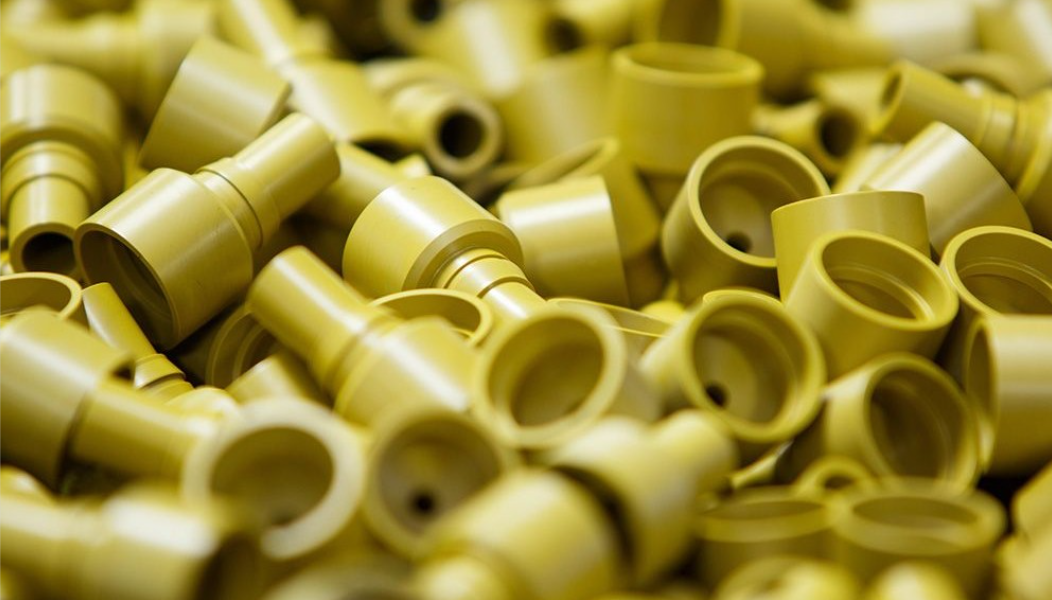Dent or micro-pitting on the surface of injection molded products is a common problem in the injection molding process. The so-called indentation is that the part with slow cooling produces a conspicuous concave surface in the direction of bubble contraction. Product dent usually occurs in the thick-walled part close to the thin-walled part due to insufficient force on the product, insufficient material filling, and unreasonable product design.
Indentation is caused by the increase of the shrinkage rate due to the increase of the wall thickness of plastic products. It may appear near the external sharp Angle or the sudden change of the wall thickness, such as the convex, reinforcing rib, or the back of the support. Sometimes it may also appear in some unusual parts. The fundamental cause of indentation is the thermal expansion and contraction of materials because the thermal expansion coefficient of thermoplastics is quite high. The degree of expansion and contraction depends on many factors, among which the properties of plastics, the maximum and minimum temperature range, and the cavity holding pressure are the most important factors. There are also factors such as the size and shape of the injection parts, as well as cooling speed and uniformity.
The angle on the molding parts cooled fastest earlier than other parts hardening, close to the thick part of the molding parts center, farthest from the cavity cooling surface be molding pieces of the last part of the heat, the corners of the material after solidification, as close to the center of the melt cooling parts, mold will continue to shrink, Angle between the plane gets only one cooling, the strength of the material of high strength no sharp corners. The cooling shrinkage of the plastic material at the center of the workpiece pulls the relatively weak surface inward between the partially cooled and the larger sharp Angle. This creates dents on the surface of the injection molded parts.
The presence of indentations indicates that the molding shrinkage here is higher than that of the surrounding area. If the molded part contracts at one place more than the other, the molded part will warp. The residual stress in the mold will reduce the impact strength and temperature resistance of the molded parts. Plastic materials in the molding process of expansion and contraction of the size of the processing of plastic thermal expansion coefficient, the thermal expansion coefficient of the molding process are known as “molding shrinkage”. As the molded part cools and contracts, the molded part loses close contact with the cooling surface of the mold cavity. At this time, the cooling efficiency drops. After the molded part continues to cool, the molded part keeps shrinking.
The shrinkage rate of molded parts of semi-crystalline plastic materials is high, which makes the indentation more serious. The molding shrinkage of amorphous materials is low, which can reduce the indentation to the greatest extent. Fill and maintain reinforced materials with lower shrinkage and less likelihood of dents. In some cases, adjusting the process conditions can avoid indentation. For example, during the holding process of a molded part, additional plastic material is injected into the mold cavity to compensate for the molding shrinkage. In most cases, the sprue is much thinner than the rest of the part and the small sprue has solidified while the molded part is still very hot and continues to shrink.
Materials with high shrinkage are also prone to dents. Shrinkage should be reduced when changing molding conditions to eliminate dents. That is, the temperature of the mold and the barrel decreases, and the injection pressure increases, but this may produce residual internal stress. If there is a small indentation that does not affect the appearance of the case, the mold can be processed into the appearance of corrosion, such as grain, grain, etc. If the molding material is HIPS (a type of polystyrene PS) with impact resistance, reducing the finish can also be achieved by lowering the mold temperature. However, these methods are difficult to repair and polish products once indentation occurs.





